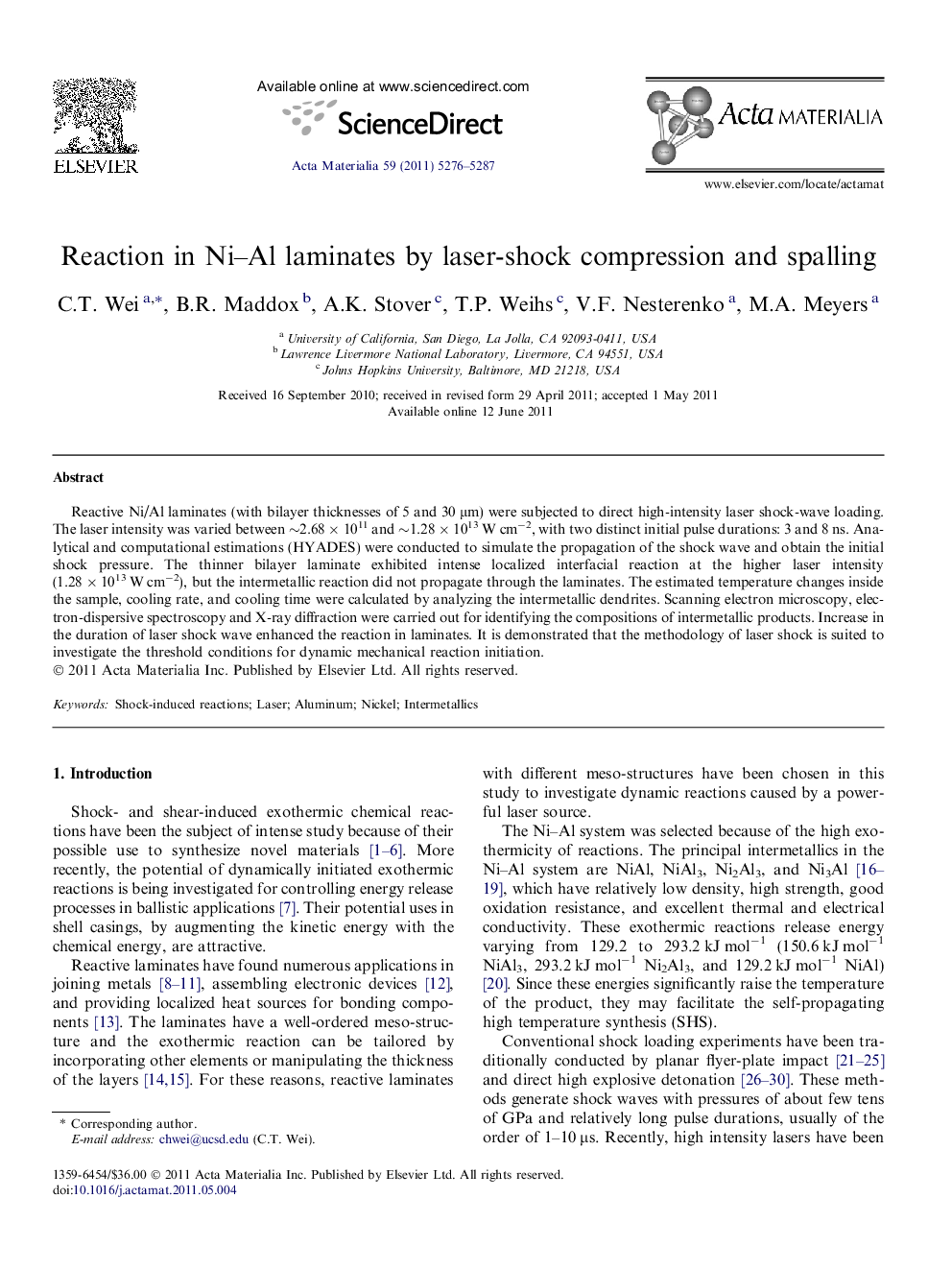| Article ID | Journal | Published Year | Pages | File Type |
|---|---|---|---|---|
| 1446871 | Acta Materialia | 2011 | 12 Pages |
Reactive Ni/Al laminates (with bilayer thicknesses of 5 and 30 μm) were subjected to direct high-intensity laser shock-wave loading. The laser intensity was varied between ∼2.68 × 1011 and ∼1.28 × 1013 W cm−2, with two distinct initial pulse durations: 3 and 8 ns. Analytical and computational estimations (HYADES) were conducted to simulate the propagation of the shock wave and obtain the initial shock pressure. The thinner bilayer laminate exhibited intense localized interfacial reaction at the higher laser intensity (1.28 × 1013 W cm−2), but the intermetallic reaction did not propagate through the laminates. The estimated temperature changes inside the sample, cooling rate, and cooling time were calculated by analyzing the intermetallic dendrites. Scanning electron microscopy, electron-dispersive spectroscopy and X-ray diffraction were carried out for identifying the compositions of intermetallic products. Increase in the duration of laser shock wave enhanced the reaction in laminates. It is demonstrated that the methodology of laser shock is suited to investigate the threshold conditions for dynamic mechanical reaction initiation.
